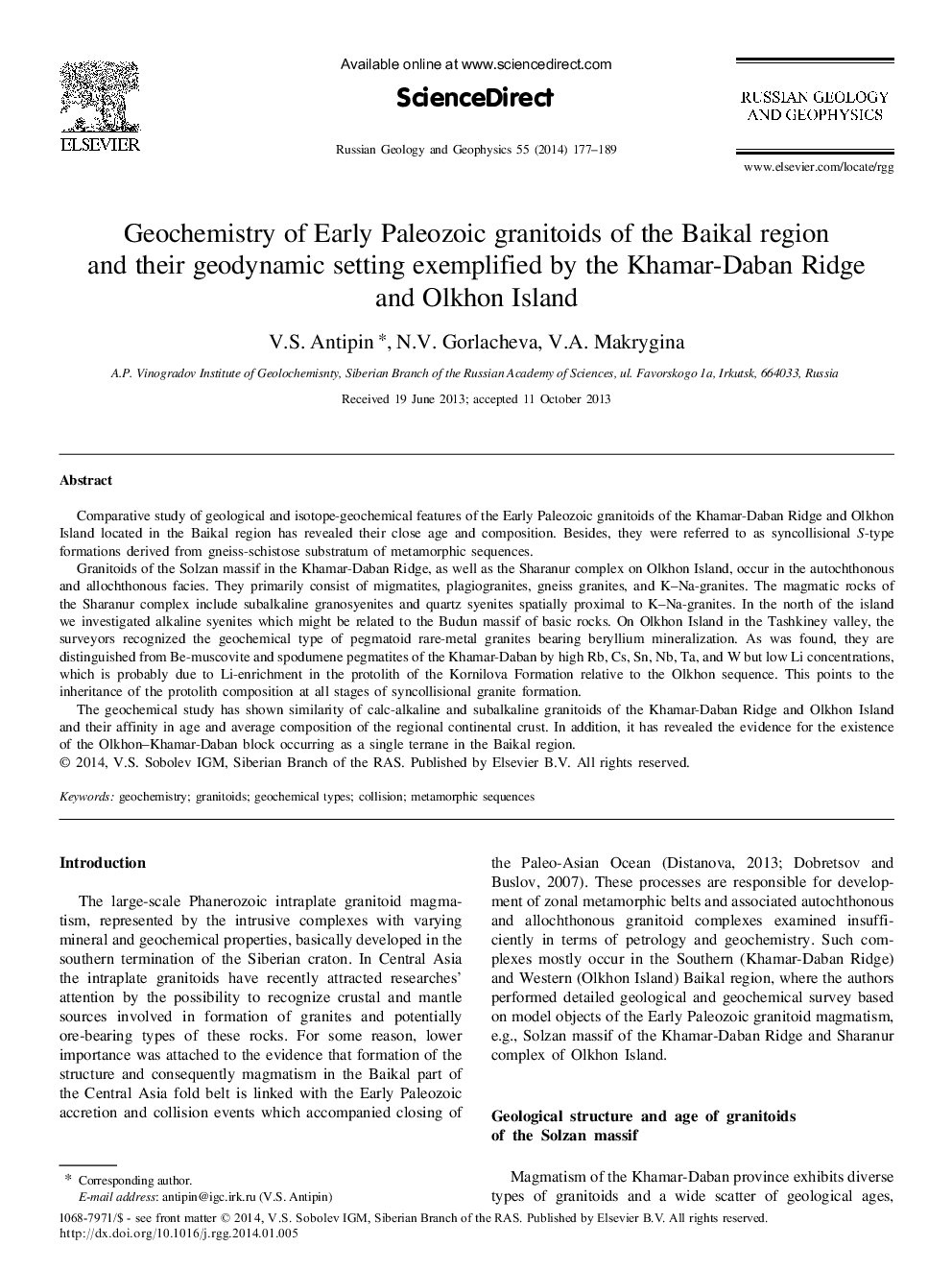| Article ID | Journal | Published Year | Pages | File Type |
|---|---|---|---|---|
| 4739102 | Russian Geology and Geophysics | 2014 | 13 Pages |
Comparative study of geological and isotope-geochemical features of the Early Paleozoic granitoids of the Khamar-Daban Ridge and Olkhon Island located in the Baikal region has revealed their close age and composition. Besides, they were referred to as syncollisional S-type formations derived from gneiss-schistose substratum of metamorphic sequences.Granitoids of the Solzan massif in the Khamar-Daban Ridge, as well as the Sharanur complex on Olkhon Island, occur in the autochthonous and allochthonous facies. They primarily consist of migmatites, plagiogranites, gneiss granites, and K–Na-granites. The magmatic rocks of the Sharanur complex include subalkaline granosyenites and quartz syenites spatially proximal to K–Na-granites. In the north of the island we investigated alkaline syenites which might be related to the Budun massif of basic rocks. On Olkhon Island in the Tashkiney valley, the surveyors recognized the geochemical type of pegmatoid rare-metal granites bearing beryllium mineralization. As was found, they are distinguished from Be-muscovite and spodumene pegmatites of the Khamar-Daban by high Rb, Cs, Sn, Nb, Ta, and W but low Li concentrations, which is probably due to Li-enrichment in the protolith of the Kornilova Formation relative to the Olkhon sequence. This points to the inheritance of the protolith composition at all stages of syncollisional granite formation.The geochemical study has shown similarity of calc-alkaline and subalkaline granitoids of the Khamar-Daban Ridge and Olkhon Island and their affinity in age and average composition of the regional continental crust. In addition, it has revealed the evidence for the existence of the Olkhon–Khamar-Daban block occurring as a single terrane in the Baikal region.
